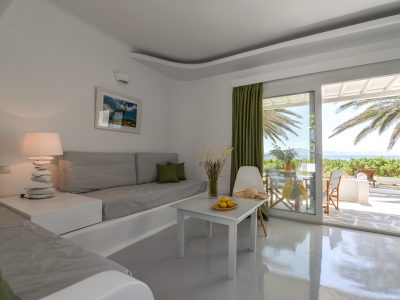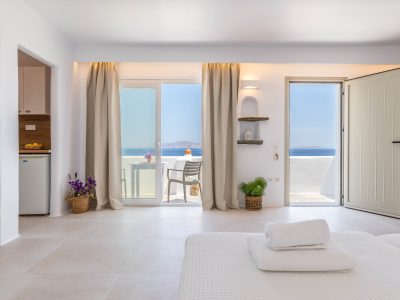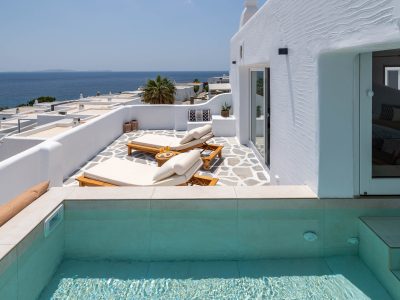MARBLE SCULPTURE. Tinos contributed to modern marble art and became a major artistic center and place of origin of the major sculptors of the 19th century. Bell towers, marble sculptures, iconostasis, despotic thrones, pulpits, tombstones, fountains, busts and statues that adorn churches, cemeteries and squares throughout Greece, are usually works of Tinian artists. This phenomenon has a lot of probable explanations. White and green marble have always been in abundance on Tinos, while wind makes …its own sculpture on the rocks and inspires the artists! Moreover, sculpture became an age-old tradition and the knowledge and technical expertise was transferred from generation to generation. According to tradition, when the famous sculptor Phidias was traveling to Delos, his place of exile, such a strong wind blew that his ship was forced to moor in Tinos -thus Tinians were taught the art by the great sculptor himself!
THE TINIAN SCULPTURES. Giannoulis Halepas, the Fytale brothers, Dimitris Filippotis, Ioannis and Georgios Vitalis, Antonis and Lazaros Sohos… Some of the most charismatic marble artists were born in Tinos. Marble workers and craftsmen from various villages of Tinos created the works that you see today adorning the settlements. After 1830, Tinian artists pioneered the reconstruction and beautification of the free Greek state’s buildings and monuments. So the island emerged as the largest marble sculpture center in Greece. Tinian artists settled in Athens, where they opened marble quarries. They have worked on almost all the monumental works: In the restoration of the Parthenon, in the Old Palace, the Arsakeio, the University, the Polytechnic, the National Library, the Academy, the Zappeion, the Archaeological Museum ... Today you will find few marble craftsmen to still practice their art in Isternia and Pyrgos.
GIANNOULIS HALEPAS. He was the most charismatic sculptor of Tinos but also a tragic figure since most of his life he was suffering from mental illness. He was born in 1851 in Pyrgos. His father was a marble worker. He studied at the School of Fine Arts of the Technical University of Athens and at the Royal Academy of Munich. His creative course is divided into two periods: Before and after the mental illness, which was the reason for being locked up for 14 years in the psychiatric hospital of Corfu. In the first period, influenced by Νeoclassicism and Romanticism, he created the works with which he remained in history: "Satyr and Eros" (1877), "Medea", "Sleeping" (1878) which you will admire in the A’ Cemetery of Athens. In the second period he created works to express his own inner impulse, which he usually destroyed after their completion. He died on September 15, 1938. Some of his works are housed in the Institute of Tinian Culture, in Hora. You may visit his house in Pyrgos village.
THE EVANGELISTRIA MUSEUMS.
Several museums operate in the courtyard of the Evangelistria complex:
- Museum of Tinian Artists. Showcasing paintings and sculptures exclusively by Tinian artists dated from the 19th to the first half of the 20th centuries. 30 sculptures, reliefs and models of Ioannis Voulgaris are also exhibited in a separate section.
- The Gallery. It houses paintings of various styles, such as the school of the Italian and Ionian Renaissance, the Flemish school, the Ionian school, classicism, French romanticism, etc.
- Exhibition of images and relics. With icons collected from various temples and monasteries of Tinos and preserved, icons-donations of pilgrims, wood carvings, engravings, as well as various invaluable historical relics. Here you will see the copy of the icon of the Virgin Mary, the old epitaph, the ring of Kolokotronis etc. The most important of the relics is one of the three surviving Maps of Rigas Fereos (printed in 1797).
- The work room of the academic Antonios Sohos. Featuring 16 sculptures of the Polytechnic professor and academic Antonios Sohos, which he donated to the Evangelistria Foundation, in 1966.
- The Shrine. You will admire silver vases, cult utensils, gold embroidered vestments and mitres, ornate gospel covers, reliquaries, candles, jewelry, etc.
ARCHAEOLOGICAL MUSEUM. It is located on Megaloharis Avenue. It showcases findings from all over Tinos and mainly from the two great sanctuaries: The Thesmophorion of the goddess Dimitra, of the 7th BC. century, which was built on the slope of Xombourgo, and the Hellenistic sanctuary of Poseidon and Amphitrite, in Kionia. Of interest is the marble sundial that dates to the late 2nd and early 1st BC. century. It is a complex structure that shows the solar time, the equinoxes and the solstices. It is unique in the world, work of Andronikos of Kyristos. Open 08.30-15.00, except Mondays, tel. 22830 22670.
INSTITUTE OF TINIAN CULTURE. This excellent cultural centre in a handsome neoclassical building on the waterfront of Hora, houses a superb permanent collection of the work of famous Tinian sculptor Giannoulis Halepas (1851–1938). It includes 22 sculptures, 15 plaster molds, small clay statues, pencil drawings. A second gallery has rotating exhibitions. Musical events are staged here in summer. The Foundation also houses a library and a café.
Tel. 22830 29070.
More information and the program of periodic exhibitions at www.itip.gr.
MUSEUM OF TINIAN ARTISTS/PYRGOS. This museum showcases the artistic production of sculptures born in Pyrgos and Isternia villages, such as Filippotis, Halepas, Voulgaris, Lampaditis, Vitalis etc. In the large hall there are 47 plaster molds of marble works. Next to this museum is the house of Halepas, declared as a historical monument in 1968. In the humble house you will see his workshop, his ascetic bedroom, personal objects, sketches and sculptures.
You visit both museums with the same ticket. Tel. 22830 31290
MUSEUM OF MARBLE CRAFTS/PYRGOS. Presenting the technology of marble, a material that holds a particular place in the architecture and art of Greece, from antiquity through to the present. The permanent exhibition, which describes the intricate meshing of tools and techniques used in working marble in a detailed and live manner, puts an emphasis on the pre- and proto- industrial Tinos, the most important centre of marble crafts in Modern Greece. In parallel, it highlights the social and economic context that the local workshops evolved in. View Detailed information The museum was created by the Cultural Foundation of the Piraeus Group and was partially funded by the DG Community Support Framework.
Open 10-18.00 every day except Tuesdays. Tel. 22830 31290. www.piop.gr.



